Bucket-list honeymoons have been trending recently, and a thrilling African safari is an adventure that many travel enthusiasts are eager to tick off. But considering how far you have to travel and all that is involved in going on safari, a lot of people assume it’s too expensive for them. But how much does an African safari cost?
While some can certainly be very pricey, the cost of an African safari can be dramatically reduced if you plan your trip with the right information. Read on to learn all the details of an African safari cost plus a few tips and tricks to planning an affordable African safari.
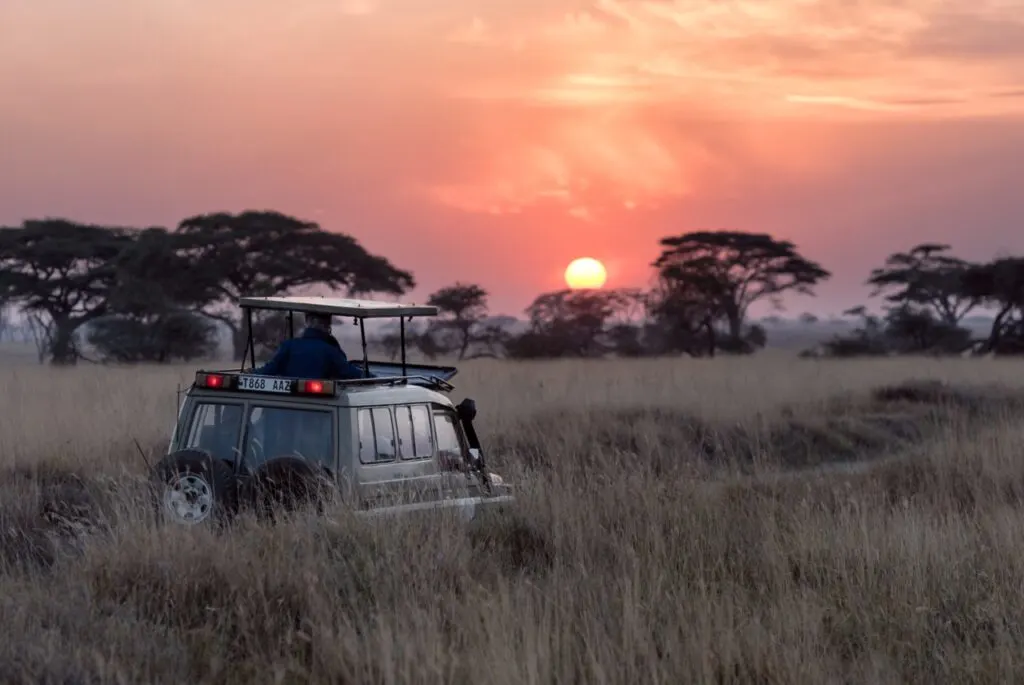
African Safari Cost Per Person Per Day
African safari costs vary depending on a number of factors, the most influential being accommodation and transportation. Other things to consider are the number of people in your party, whether you go for a private safari or join a group, which country you choose for your safari, the time of year you go, how many days you go on safari for, and what kind of activities you want to partake in while on safari.
Depending on where you’re traveling from, you’ll also need to consider the cost of your flight, which can cost even more than the safari.
In general, an African safari cost can range anywhere between $115 per person per day to more than $1800 per person per day. That’s quite a wide range, so let’s explore it in more detail.

Additional African Safari Costs
On top of travel expenses and the price of the safari, there are some additional costs to consider. When you pay for a safari, you’re not just paying for the guide; the price usually covers any additional expenses associated with traveling in Africa.
First, there are park entry fees. Almost all safaris take you into an African national park or game reserve. A park fee of between $50 – $100 per day goes towards protecting and conserving wildlife and environmental management. The park fee will be included in the cost of your safari, but if you want to do any additional activities like visiting a village or trekking in a park that’s not included in the original itinerary, you’ll need to pay the fee to enter that park as well.
Then there is the cost of your vehicle. Jeeps are the most common safari vehicle because they can handle almost any type of terrain, can comfortably seat a group of passengers, and have open-air cabins so there’s nothing obstructing the views of the landscape. Budget safaris probably won’t drive you around in a Jeep; you’re more likely to use a bus or a van, which hinders your ability to see and can be very uncomfortable, especially if you’re driving across rough terrain in the middle of a hot day.
Many people consider a safari a once-in-a-lifetime experience, so they splurge on a Jeep or something similar. The cost of an African safari in a Jeep will be roughly $150 – $250 daily.
Finally, you may have the option to add extra excursions or activities to your safari, like visits to tribal villages, hot air balloon rides, or hiking the Mt. Kilimanjaro Lemosho route. This is usually only the case if you book a private tour; prices vary by service provider.

African Safari Cost: International Flights
When traveling from North America, it’s almost always cheaper to fly to a major hub in Africa, then book a connecting flight with a smaller regional airline than it is to take a direct flight. Nairobi is the major hub for safaris in East Africa. For South Africa safaris, it’s Cape Town and Johannesburg.
Delta Airlines has the most flights to Africa from the United States, with flights departing from Atlanta and New York to Johannesburg, Dakar, Lagos, and Accra (on the west and south coasts) at least once per day. Other airlines with direct service from the U.S. to Africa are Ethiopian, United, Egypt Air, Royal Air Maroc, Kenya Airways, Air Senegal, and Azores Airlines.
The cheapest flights from the United States to Africa leave from Chicago, New York, Miami, Atlanta, and Washington D.C. They start at around $600 and can go as high as $950.

African Safari Cost: Visa
Visa costs range by nationality, the length of your stay, and destination country. Expect to pay between $50 – $75 for single-entry visas that are good for a month. In some countries, it’s possible to get multi-entry visas, which you’ll need if your safari requires you to cross the border into another country. For example, safaris that follow the Great Migration of wildebeest cross the border between Tanzania and Kenya.
It’s vital to have your visa paperwork done correctly and on time to guarantee entry into Africa and to prevent any delays in your safari itinerary. Hiring a travel professional to take care of the paperwork for you might be the best way to go. Some safari companies will take care of the visa paperwork for you and include the cost in the rate. Others offer the service as an optional add-on.
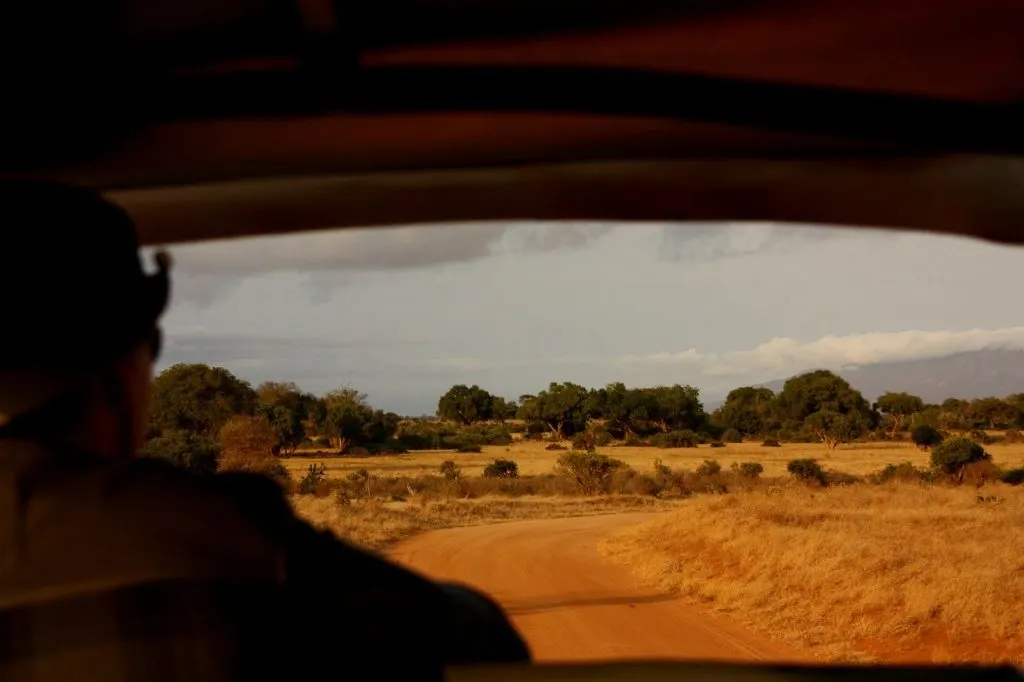
African Safari Cost: Accommodations
Accommodation will eat up the lion’s share of your Africa safari costs. Depending on how long you’re going on safari, it might seem worth it to skimp on where you stay in favor of a longer trip and more activities. It’s important to understand the difference in accommodation styles so that you know what you’re in for if you want to rough it to save money.
The cheapest African safari accommodation is a tent in a park. For these budget group safaris, you’ll be provided with everything you need to make camp, but you’ll have to bring your own sleeping bag and whatever other bedding you’d need. You may or may not need to bring your own mosquito net.
The bathroom situation is the biggest hurdle for many, especially folks who aren’t already hardened campers. Outhouses are located at various points in the national parks. It’s advisable to use the buddy system when you need to use it. If you need to go in the middle of the night, you’ll need to wake someone up or risk encountering a wild animal by yourself in the darkness.
For a few dollars more, your safari will include a mix of tenting and staying in cheap, basic motels with running water, mosquito nets, and flush toilets. Again, this option isn’t for the faint of heart, but it’s affordable if you’re on a tight budget. If you don’t want to camp at all, you can find mid-range safaris that offer hotel-only accommodation.
Accommodation for luxury African safaris includes beautiful tent mansions with separate sleeping, dining, and leisure areas or rustic cabins in the middle of nowhere. Electricity and running water are usually available to use sparingly. You’ll also get many of the comforts of home like bathtubs, real beds, dining tables, and hammocks. Meals are of higher quality and drink packages are available in some instances.
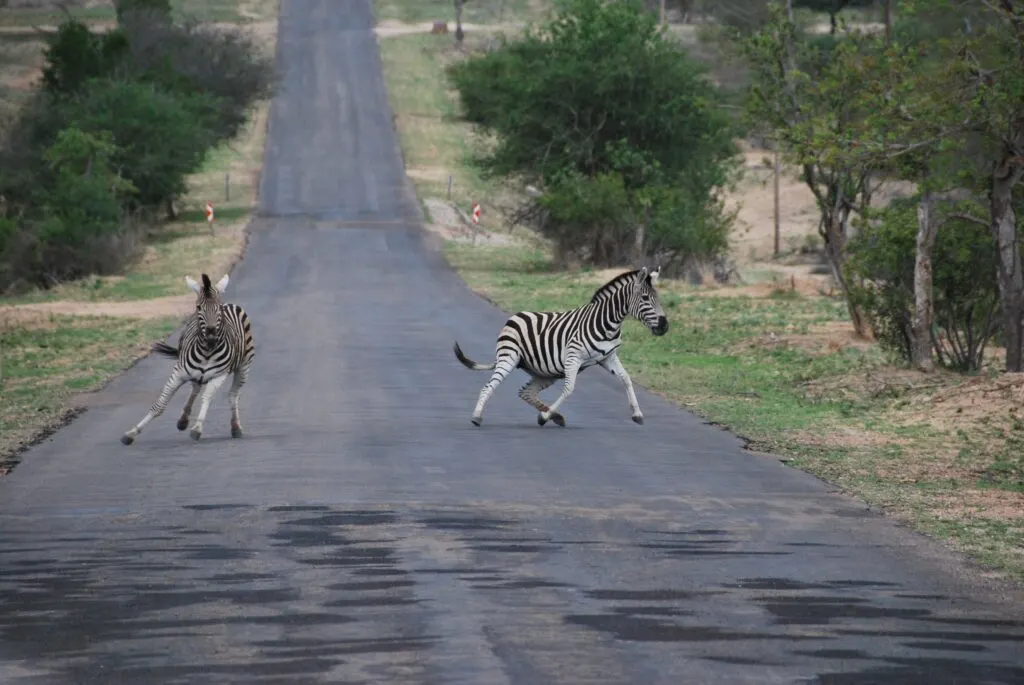
African Safari Cost: Tips
The tourism sector is one of the biggest contributors to the economy in East Africa. A tip of between 10% – 20% is customary and expected by the locals. While on safari, you’ll have a guide and one or two trackers. A tip of between $5-$10 per person per day is the average.
Lodges and hotels often have communal tip jars at the front desk where you can drop $5 or $10 per day for the staff to divvy up among themselves. If your lodging has housekeeping, you should tip your housekeeper separately.

African Safari Cost: Vaccinations
A vaccination against yellow fever is recommended if you’re going to travel anywhere in Africa, and compulsory in some countries. A yellow fever shot costs around $170. You should also travel with and take malaria pills, especially while on safari. A pack of 24 pills costs around $183.
It’s also highly advisable to make sure that you have an up-to-date Twinrix vaccination ($70), a tetanus booster ($30), and vaccinations against diptheria and typhoid ($60 and $200, respectively).
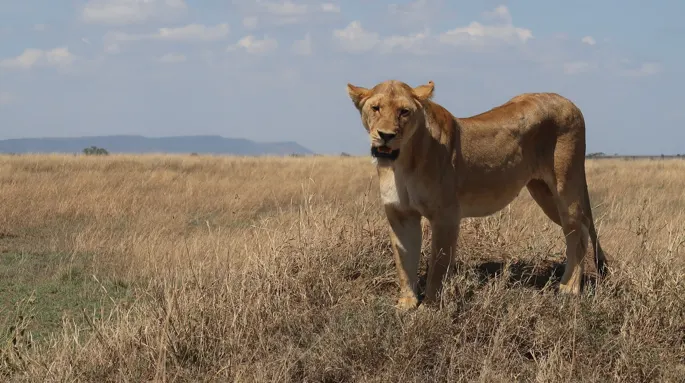
African Safari Cost: Travel Insurance
Generally speaking, you don’t need a special insurance policy to go on safari in Africa unless you’re doing strenuous or risky activities like sky diving, bungee jumping, or mountain climbing. However, policies vary by insurance provider, so make sure to disclose all your travel plans with your broker and carefully go over your policy to make sure you’re covered. Coverage of at least $100,000 is highly recommended.
Also, make sure you’re covered for trip cancellation and interruption. There are travel credit cards that have automatic travel protection for airline tickets, but if the safari is canceled (for example, due to flooding) a credit card probably won’t cover that.
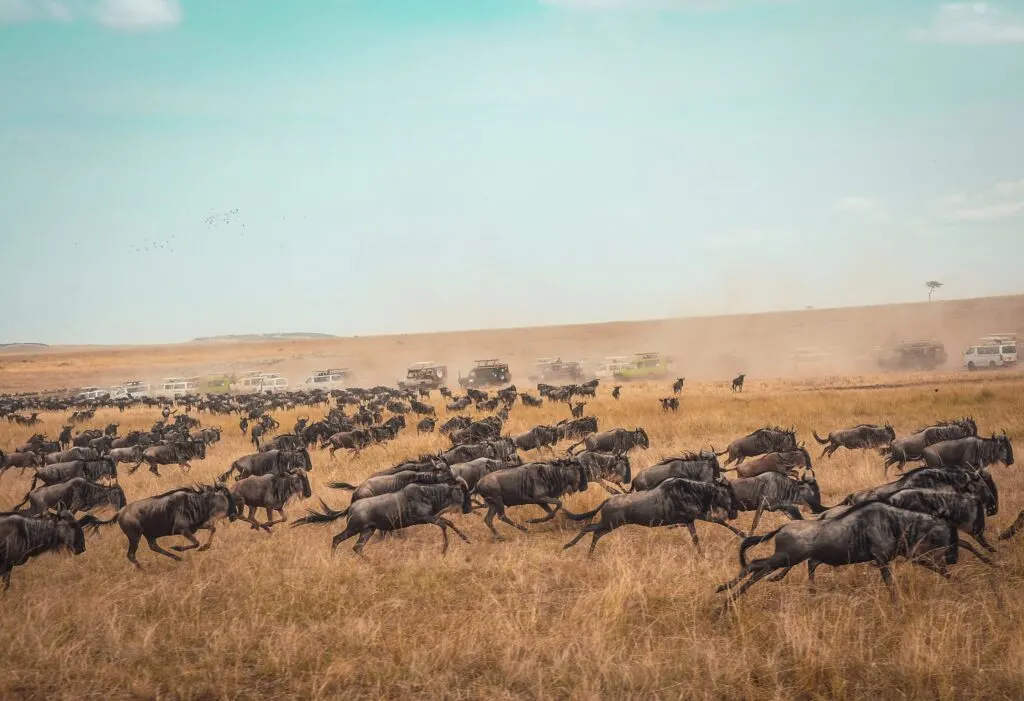
East African Safari Cost Guidelines
Regions in East Africa are the most popular for going on safari. Tanzania and Kenya stand out because of the Great Migration, an incredible yearly event wherein over 2 million animals follow the rains across the Serengeti to Masai Mara and back again.
Safaris in Tanzania are generally more expensive. Kenyan safaris are usually busier since they’re cheaper. Botswana is another popular East African safari destination for luxury travelers. Zambia is less known and tends to be the least expensive.
While on an East African safari, you can expect to see the “Big 5”–lions, leopards, rhinos, elephants, and African buffalo or wildebeest. The busiest seasons run from January until March (calving season) and July until November, when the animals are migrating. Expect lots of tourists and for accommodation to be between 2 to 4 times more expensive.

Tanzania Safari Cost
Tanzania safaris are split into the Northern and Southern Circuits. The Northern Circuit includes the Serengeti, where safari-goers can witness The Great Migration. Ngorongoro, Tarangire, and Lake Manyara are also located in the Northern Circuit and provide the best opportunity to see The Big 5. Although it’s busy, the Northern Circuit is cheaper and there are more accommodation options. It’s also more well-traveled, and sights are easier to get to.
The parks in the Southern Circuit are usually less crowded. The Southern Circuit is more expensive, accommodations are fewer and farther between, and the remoteness makes it feel more authentic.
You can find budget safaris in Tanzania for less than $400 per person, per day. Mid-range safaris are only slightly more expensive, averaging between $325 and $525 per person per day for private tours. There are many budget and mid-range group tours for less than $500 per day.
Mid-range Tanzania safaris come with nicer, more comfortable accommodations and transportation, which is worth the small increase in price. Luxury group safaris in Tanzania start at $700-$800 per person per day and can go as high as $1400 per person for a private tour.
If you want to follow the Great Migration, begin in northwestern Serengeti between late June and July. August is the most exciting (and expensive) time to witness the migration, as herds of animals cross the Mara River in the northern Serengeti, which is infested with crocodiles. By September, animal sightings begin to dwindle and the crowds are less frequent.
During November and December, the animals begin migrating from Kenya back into Tanzania, so you can witness the Great Migration in reverse. It’s cheaper and less crowded, but you might have to deal with some rain.
International flights to Tanzania are around $1700. A multi-entry visa (the only type of visa Americans are eligible for) costs $100; Canadians can obtain a single-entry visa for $50.
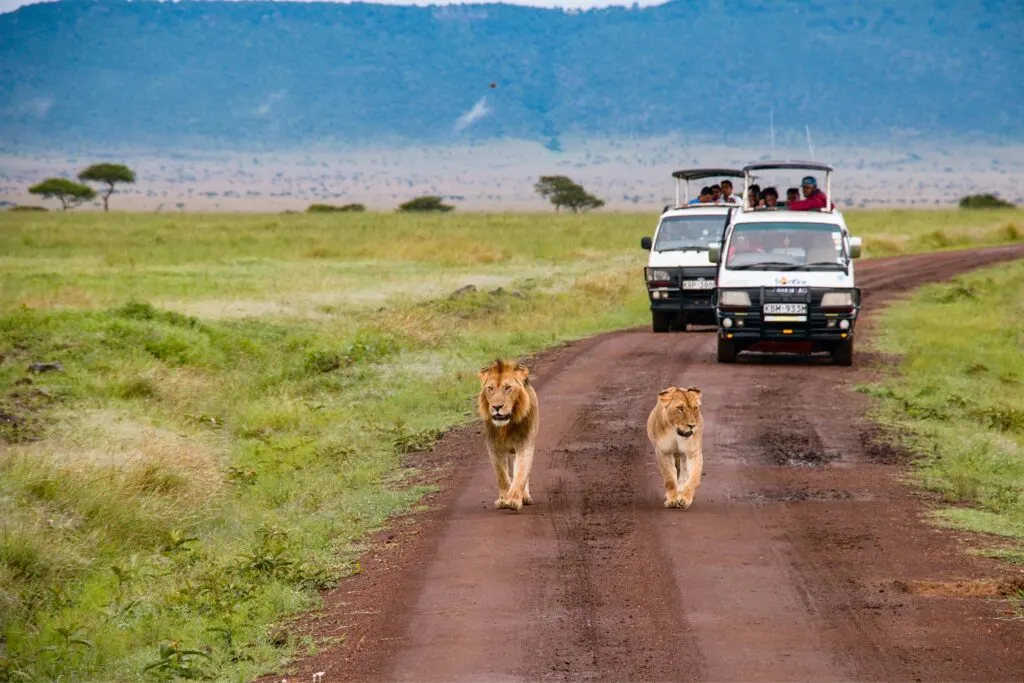
Kenya Safari Cost
Kenya is home to the Masai Mara, a game reserve known for its unique biodiversity. Its ample animal population makes it the most popular African safari destination, especially between June and October when migrating animals from Tanzania flood the plains.
Plan to spend at least 3 – 5 days in the Masai Mara. The routes here are well-traveled and the tourism industry has been well-established as safe for years. Some other popular safari destinations in Kenya include Amboseli, Tsavo, Samburu, and Lake Nakuru.
Budget Kenya safaris start at about $200 per person per day. Private and group mid-range safaris average around $300. If you want to witness The Great Migration while staying in luxury accommodation, you can find quite a few good options for around $550. For ultra-luxurious, private Kenyan safaris, the price jumps drastically to around $1000.
The park is less crowded between January and March than from June to October, and you can sometimes find discounted rates. You’ll enjoy warm weather and an abundance of wildlife, including lots of newborns.
A flight from New York to Nairobi starts at around $1500. A single-entry visa costs $50, but if you plan on visiting other countries you can obtain an East African Tourist Visa for $100.
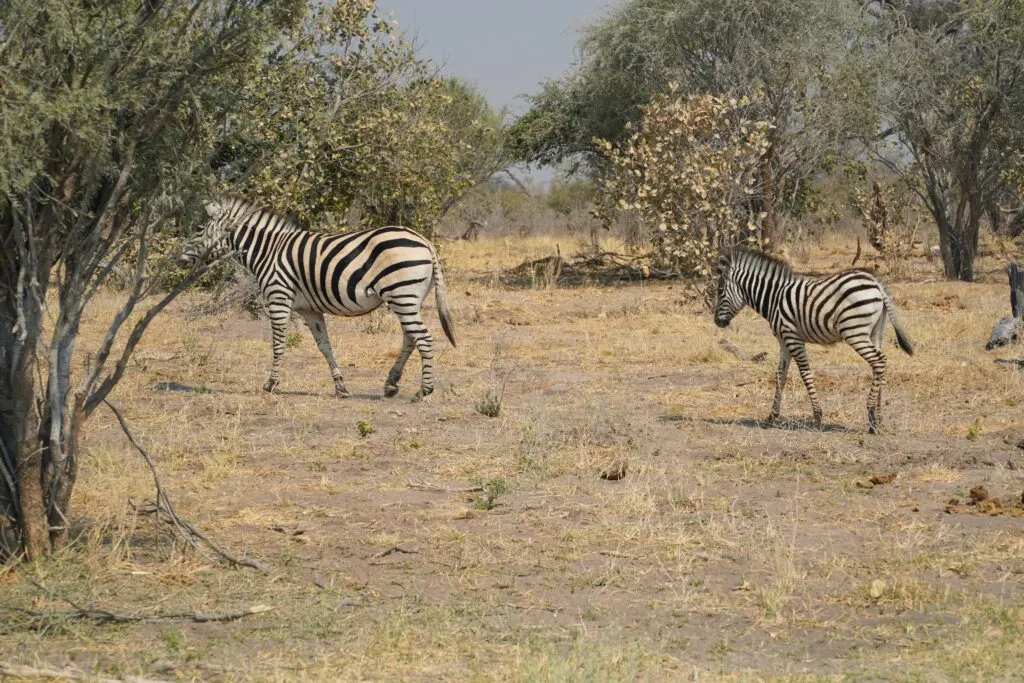
Botswana Safari Prices
Botswana safaris are the most expensive of the top four East African safari destinations. Tours here are marketed toward travelers who can afford luxury safaris, although there are some budget options available.
Basic tents start at $275 per day for a group and around $350 per day for a private tour. Private tours with mid-range accommodation cost between $500-$700 per person per day, while group African safaris cost considerably less, capping out at around $400.
There is a wide range of luxury safaris to choose from. Prices are competitive, but you should budget at least $700 per person per day to stay in a beautiful tent or cabin and enjoy delicious homemade meals. Prices can climb as high as $1600, with lots of luxury thrown in.
A single-entry visa for Botswana costs $25 for one month. You can also get a multi-entry, 5-year visa for $100. Since there are no direct flights to Botswana from North America or Europe, you should book a flight to South Africa or Kenya, then transfer to Botswana. A sample price for a flight to Maun (the main starting point for most Botswana safaris) is $2300.

Zambia Safari Costs
As far as African safari destinations go, Zambia is perhaps the least-known in East Africa, but it shouldn’t be. It has more than 50 parks and game reserves and provides excellent conditions for a walking African safari.
Since it’s not so well-known, Zambia is one of the most affordable countries for an African safari. Budget and mid-range accommodations range between $150 and $250 for groups. Private tours have a wider price gap, about 10-20% more for budget accommodation and 35% more for mid-range.
If you want to splurge a little bit, this is the best place to get the most bang for your buck on safari. Group and private tours with luxury accommodations are available for less than $600 per person per day. Ultra-luxurious private tours are surprisingly affordable at around $1000 per day.
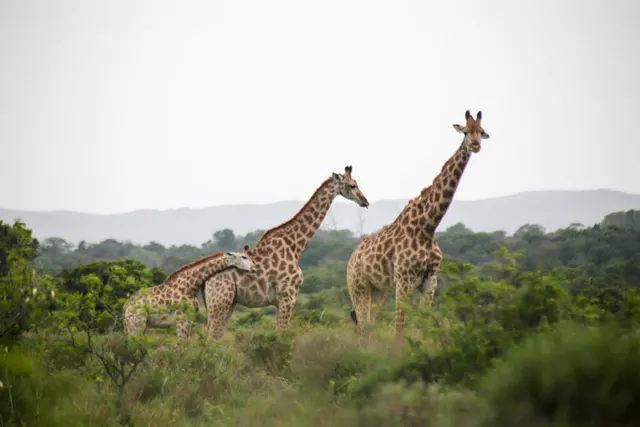
Southern African Safari Cost Guidelines
South Africa is where you will find the widest price ranges. Flights are more frequent and less expensive, and the tours are highly customizable thanks to the country’s diverse ecosystem and wildlife.
The ecological diversity and size of South Africa compared to the other destinations on this list means that South Africa is a year-round safari destination. Prices will vary by both region and time of year. For the best wildlife viewing, safaris near Johannesburg are recommended.
South Africa is also one of the cheapest and easiest African countries to travel to. There are no vaccine requirements (although it is strongly advised to be vaccinated against yellow fever, get booster shots, and carry malaria medication) and no visa costs. Travelers arriving from North America, Australia, and most European countries can enter South Africa for free and stay a maximum of 90 days.
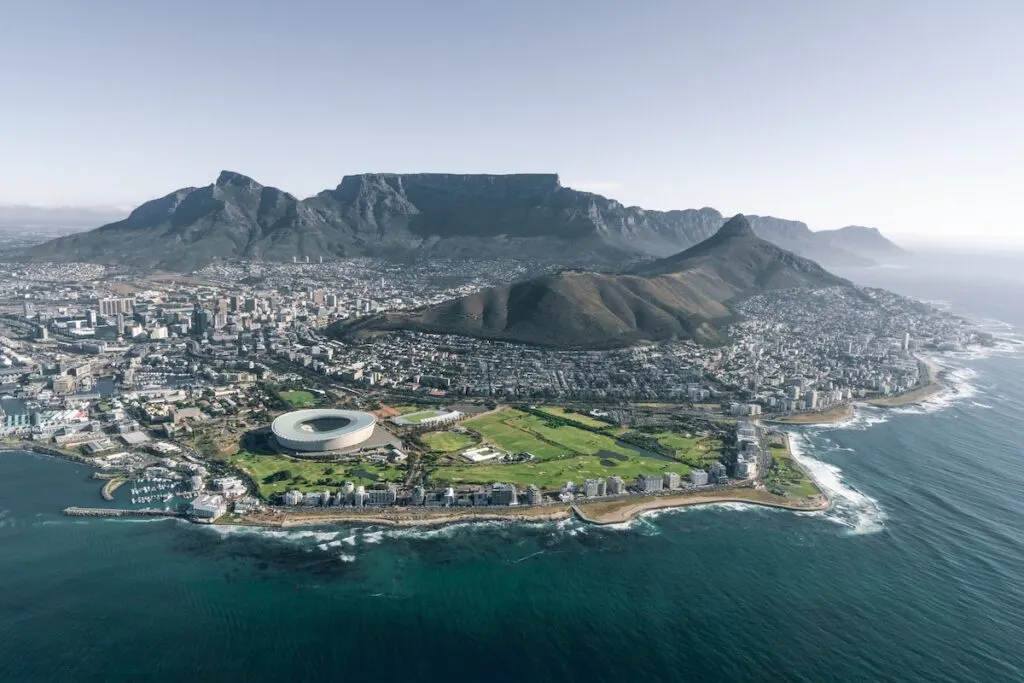
South African Safari Cost
On a South Africa safari, camping accommodations start at $200 for a group. Mid-range accommodations are only slightly more expensive, averaging between $200 – $400 for groups. Private tours follow the same price trend, and there isn’t much discrepancy between budget and mid-range private tours. A difference of $100 per day stands between camping in the wilderness and staying in a small motel with a few comforts.
Luxury accommodations start at $550 for private quarters and around $500 for a group luxury compound. If you want a honeymoon safari in South Africa, expect to pay at least $1300 for an ultra-luxurious, romantic setting.

Gorilla Trekking Cost Guidelines
When planning your safari, you usually have the option to add on a few extra excursions. Trekking into the mountains to observe gorillas in their natural habitat has become increasingly popular in recent years. Mountain gorillas are endangered and cannot be kept in captivity, so going to where they are is the only way to see these giants up close.
Because of their endangered status, there are strict guidelines set in place to protect gorillas and their environment, and only a set number of permits are sold each year to prevent human contact from destroying their ecology.
Gorilla treks are only a day long and can be done on their own or added on as part of an African safari in Rwanda, Congo, or Uganda. Of these three, Congo is the cheapest option, but Uganda is the best since you also might be able to see other giant African animals in addition to gorillas. The treks are around 5 hours long. Once you find gorillas, you can spend up to an hour with them before heading back.
Gorilla trekking is possible year-round, but heavy rains make some times of year more desirable–and more expensive–than others. A gorilla trekking permit in Volcanoes National Park in Rwanda costs $1500. These permits are coveted and tend to sell out over a year in advance.

Gorilla trekking is much cheaper in Uganda, with permits costing only $700. Guides will take tourists trekking into Bwindi Impenetrable Forest National Park. Travelers with a vested interest in African nature can apply for a habituation permit, which costs $1500 and allows you to spend up to 4 hours in the wild with gorillas alongside researchers.
Odzala-Kokoua National Park is a concentrated area of gorilla conservation in the heavily hunted and deforested Democratic Republic of Congo. Here, gorilla trekking costs $400 and you can trek into the wilderness much more easily than in other countries, which require you to drive deep into the wilderness before even beginning a trek of 4 – 5 hours.
Gorillas can be found in Congo in as little as an hour. The weather here is wetter and warmer than in Rwanda and Uganda, so you can always expect some rainfall, but there is slightly less rain between the months of June and September and December and February.
Gorilla trekking is strenuous, and porters can be hired for around $20/day to help you carry your hiking pack or heavy camera equipment with you.
So there you have it, a complete guide to African safari cost. If you’re ready to plan the adventure of a lifetime, contact one of our trusted travel agent partners to help you create the perfect African safari for you.
He is an expert travel advisor and enthusiast. He has traveled extensively in the USA, Central America, South America, and Europe. He has visited every Sandals Resort and is one of a select few Diamond Elite members of the Sandals Chairman’s Royal Club.
Dan graduated from Johnson & Wales University with an associate degree in Culinary Arts. Later he graduated from the University of Utah with a bachelor’s degree in International Studies with a focus on people and culture.

